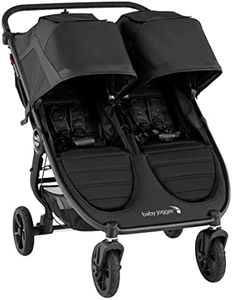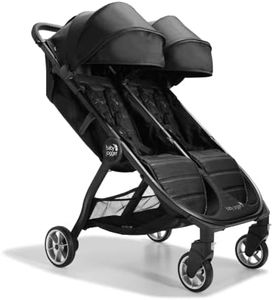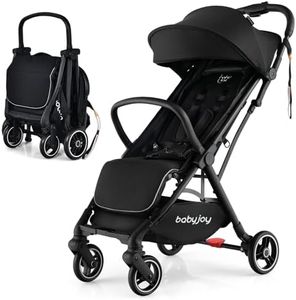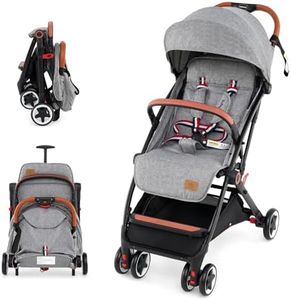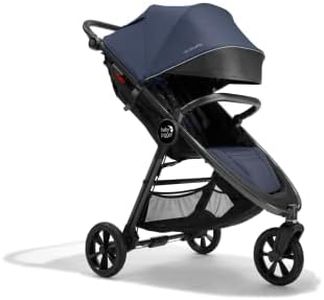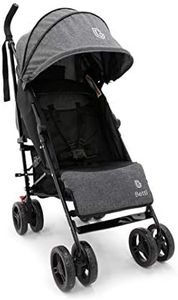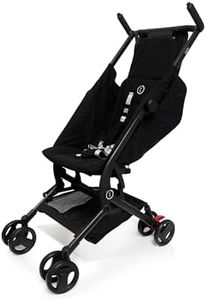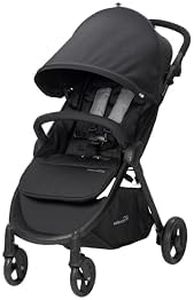We Use CookiesWe use cookies to enhance the security, performance,
functionality and for analytical and promotional activities. By continuing to browse this site you
are agreeing to our privacy policy
10 Best Compact Strollers
From leading brands and best sellers available on the web.Buying Guide for the Best Compact Strollers
Choosing the right compact stroller can make everyday outings with your child much easier and more enjoyable. Whether it's for travel, running errands, or navigating crowded streets, a compact stroller is all about convenience without sacrificing comfort. The key is to match a stroller's features to your lifestyle and needs so you get the right balance between portability, usability, and comfort for both you and your child.Folded SizeFolded size refers to how small the stroller becomes when it's folded up. This matters because a truly compact stroller should easily fit in your car trunk, storage closet, or even an airplane overhead bin. Folded sizes can range from ultra-compact (like the size of a backpack) to more typical compact strollers, which may be bulkier but still smaller than regular models. If you travel a lot or have limited storage space, opt for the smallest folded size possible. If compactness is less important and you want a sturdier feel, a slightly larger folded size might work fine.
WeightStroller weight is crucial for portability. Lightweight strollers can be as little as 10-15 pounds, while heavier compacts might be above 15 pounds. Lighter strollers are easier to carry up stairs or lift into cars, but sometimes sacrifice on suspension or durability. Heavier strollers offer more stability and features but can be harder to handle. Think about how much you'll be carrying the stroller, for example during travel or on public transport, and choose a weight you can manage comfortably.
Reclining SeatA reclining seat allows your child to lie back or sit upright. This feature is important for long outings or naps on the go. Some compact strollers have only a slight recline, while others can go almost flat for newborns or sleeping toddlers. If your child will nap often or you’ll use the stroller for younger babies, look for a stroller with multiple recline settings or a near-flat recline. If naps aren't a priority, a basic recline may be sufficient.
Ease of FoldingThis refers to how simple and quick it is to fold the stroller, usually with one hand or even one step. Easy folding is valuable when you have your hands full or need to pack up quickly, such as in public transport or airports. Some strollers are designed to fold in one swift movement, while others require more steps. If you'll be folding the stroller often, choose a model known for quick, hassle-free folding.
Canopy CoverageThe canopy provides shade and protection from the sun, rain, or wind. Canopy sizes range from small (just above the child's head) to extra-large with multiple extension panels. Larger canopies offer more coverage, which is helpful in sunny or rainy climates. Think about your typical outings—if you’re outdoors a lot, prioritize a bigger, adjustable canopy for your child’s comfort.
Storage BasketThe storage basket is the space underneath the stroller for carrying baby items, shopping bags, or personal belongings. Basket size can range from very small (fits a diaper bag) to moderate (holds groceries or more). If you often shop or carry lots of essentials, a larger, easily accessible basket is helpful. For short outings or travel with minimal gear, a smaller basket may be enough.
Harness TypeThe harness is the safety belt system that keeps your child secure. Compact strollers usually have either a 3-point (belt across the waist and crotch) or a safer 5-point harness (adds shoulder straps). For greater security, especially for younger or very active children, a 5-point harness is best. If your child is older or the stroller use is occasional, a 3-point harness might suffice.
